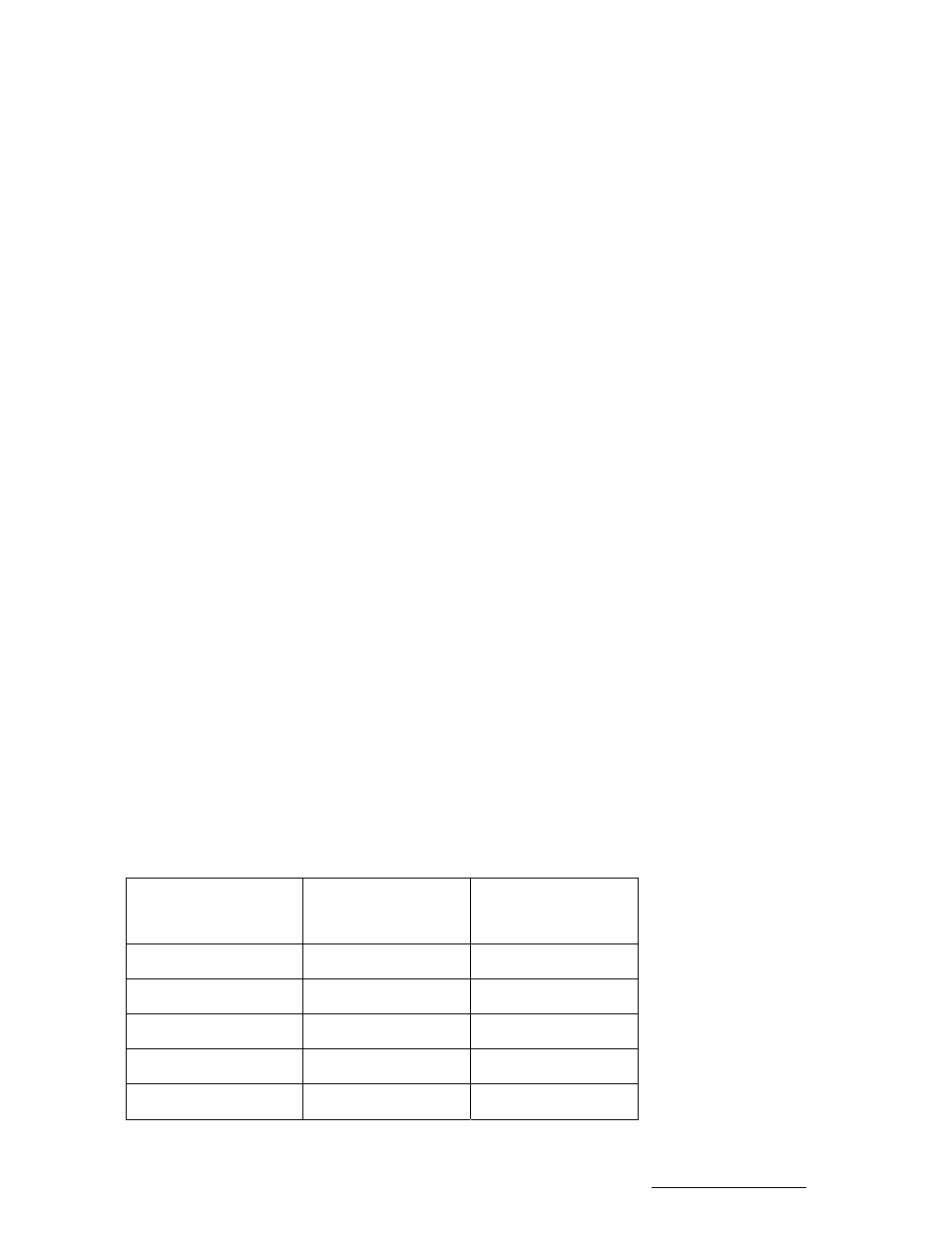Research Concepts RC2000A User Manual
Page 109

RC2000A Dual Axis Antenna Controller
Appendix I
2.6x Addendum
109
is perfectly aligned with a satellite) gives the best performance. Stated another way, the step size
should be the antenna pointing error in degrees from antenna boresight, that corresponds to an antenna
pointing loss of 0.5 to 1.0 dB.
For an elevation over azimuth type antenna mount, to determine the optimal elevation step size it is
necessary to know …
1. The angular deflection (in degrees) that results in a given drop in signal strength (in dB - note that
this relationship is a function of frequency band), and
2. The antenna’s elevation axis position_count per degree characteristic.
Mathematically, this is represented as …
El Step Size (position counts) = Angle (degrees) x (elevation position counts / degree),
where Angle is angular deflection away from antenna boresight (in degrees) that results in the desired
drop in signal strength (0.5 to 1.0 dB).
The calculation of the optimal azimuth step size is similar to that for the elevation axis except that an
additional correction factor is required to account for the fact that one degree of azimuth movement
does not change the antenna pointing angle by one degree when the elevation angle is greater than
zero. To visualize this, note that if the elevation angle could be adjusted to 90 degrees (the antenna
pointing straight up), azimuth movement does not change the antenna pointing angle at all, it merely
rotates the antenna (changes polarization). The correction factor varies with antenna elevation angle
which is related to the latitude of the earth station.
Mathematically, this is represented as …
Az Step Size (position counts) =
Angle (degrees) x (azimuth position counts / degree) x
(degrees of az movement for one degree of antenna pointing angle change)
3.5.2 Pointing Error (degrees) Given Pointing Loss (dB) Relationship
The following relationship calculates antenna pointing error (in degrees) given antenna pointing loss (in
dB) …
Antenna_Pointing_Error (deg) =
[SQRT[Signal_Loss (dB)] x 5.55] / [Antenna_Diameter (meters) x frequency (GHz)]
The following table gives the antenna pointing error (in degrees) for 0.5/1.0 dB pointing loss values for
C Band (4 GHz) and Ku Band (12 GHz).
Antenna Diameter
C Band (degrees)
0.5 dB / 1.0 dB
Pointing Loss
K Band (degrees)
0.5 dB / 1.0 dB
Pointing Loss
2.4 meters
0.41 / 0.58
0.14 / 0.19
3.1 meters
0.32 / 0.45
0.11 / 0.15
3.8 meters
0.26 / 0.36
0.09 / 0.12
4.5 meters
0.22 / 0.31
0.07 / 0.10
6 meters
0.16 / 0.23
0.05 / 0.08
Research Concepts, Inc. • 5420 Martindale Road • Shawnee, Kansas • 66218-9680 • USA www.researchconcepts.com